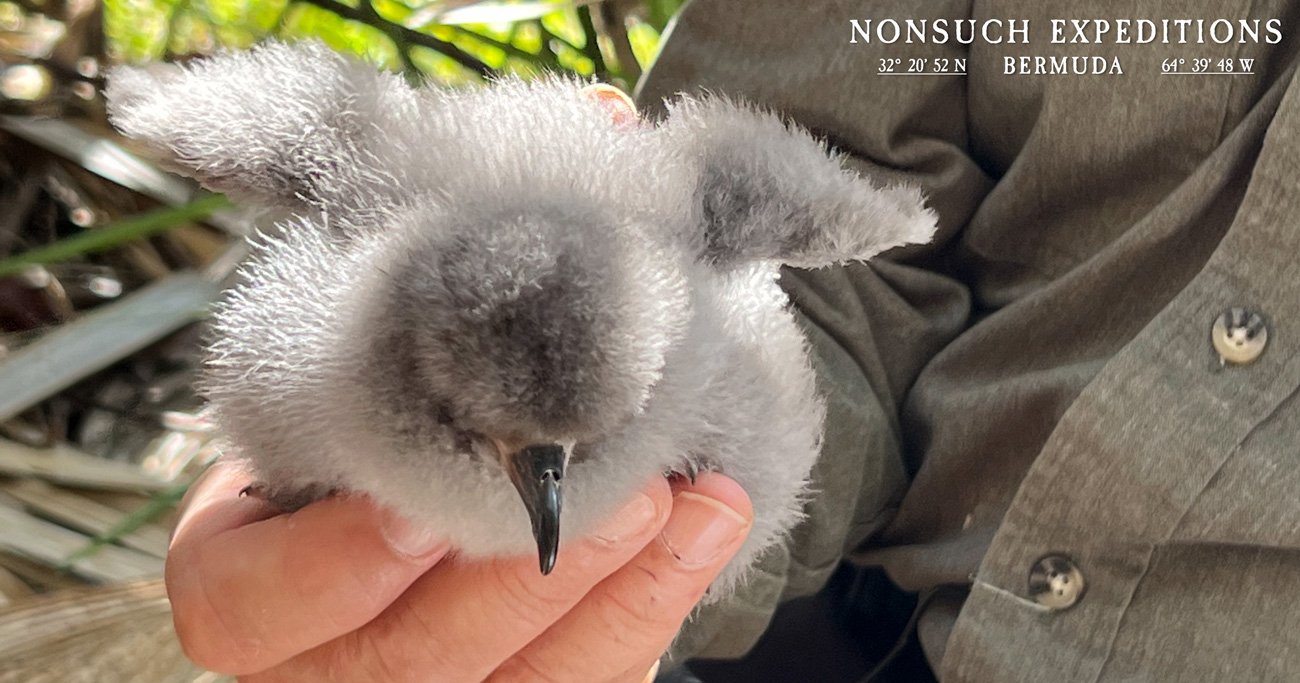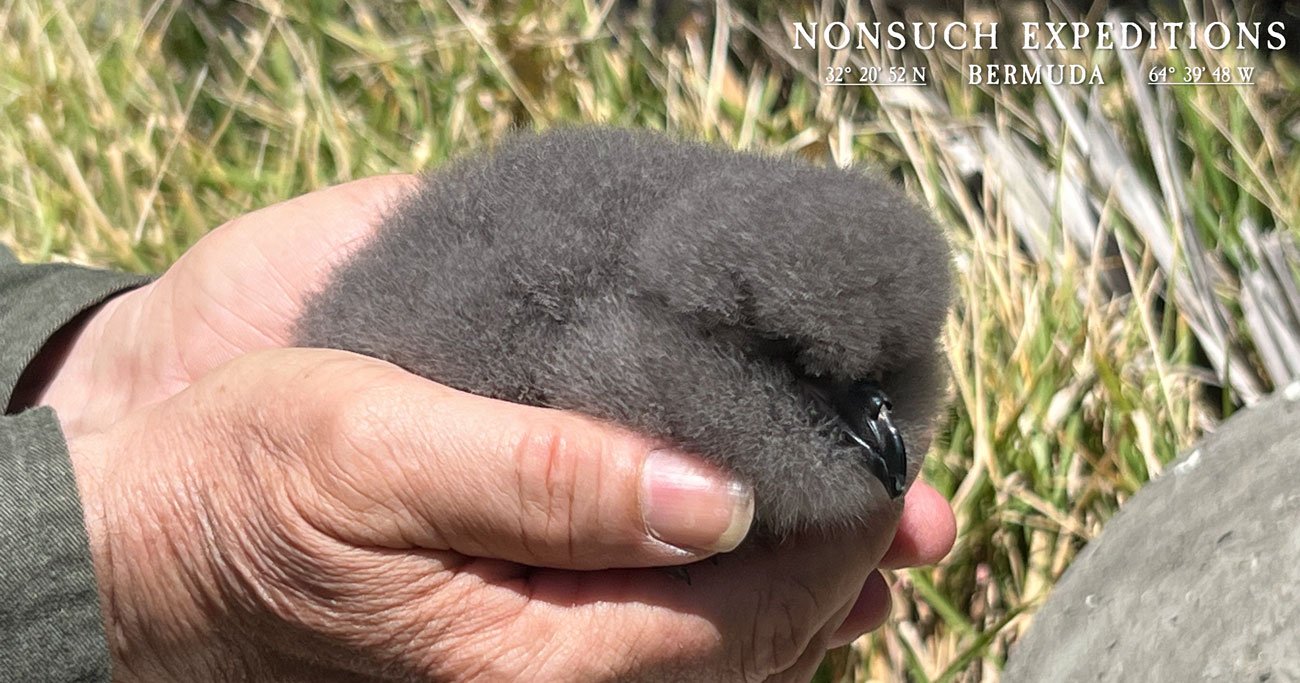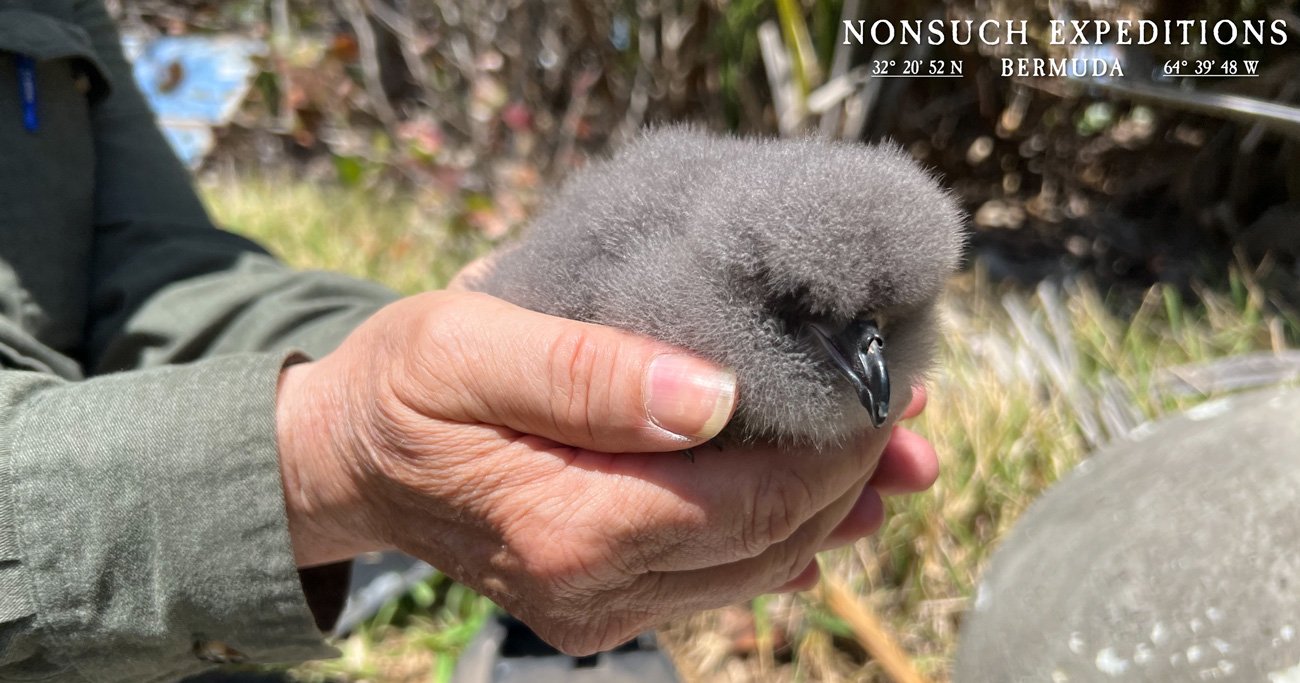As a testament to the success of the groundbreaking Translocation project being conducted by Jeremy Madeiros and his team over the past 20 years, there are 18 confirmed chicks this year, between Nonsuch Translocation Colonies A & B. In parallel the CahowCams now in their 10th year continue to offer a view into the otherwise secretive lives of the Cahows hidden in their underground burrows. (see below)
For context, Cahows were exterminated by introduced mammal predators and hunting by the early English colonists by 1620 from Nonsuch Island and were also thought to be completely extinct throughout Bermuda (and globally) by that time.
They were not rediscovered until 1951, when only 18 breeding pairs were found nesting on 4 tiny isolated half-acre rocky islets. These were so difficult to access that they were rarely visited by humans and were so small and rocky that even predators such as rats could not survive for long. It required the development of new techniques and technology by researchers in New Zealand, Australia and the United States to enable Jeremy and his team to carry out translocation projects to re-introduce the Cahow to Nonsuch Island, which is much larger and more elevated than the original nesting islets.
The first Cahows were translocated to Nonsuch “Colony A” as chicks between 2004 and 2008, with the first of these fledged chicks returning to the island by 2008 to choose nesting burrows and attract mates. The first breeding pair nested the following year, producing the first known Cahow chick since 1620 to hatch and fledge on Nonsuch in 2009. A second translocation project moved chicks to a second site on Nonsuch between 2013 and 2017 to “Colony B”.
Since that first breeding pair and chick, in the last 14 years, the number of breeding pairs at both sites has increased to a total of 34 in 2023, with the number of confirmed chicks at a record number of 18, with a possible 19th chick in a deep natural burrow.
In addition, a total of 25 Cahow chicks were also confirmed on the 23rd March at one of the original nesting islets. Three other small nesting islets still have to be visited to confirm just how many chicks have hatched there, as conditions have generally been so rough and/or windy that safe landings have so far been impossible there.
In addition to the record number of hatched chicks at the two translocation colony sites, Nonsuch Island is also experiencing a increase in the number of returning, or prospecting nonsuch-hatched Cahows, which have spent 3 to 5 years at sea since fledging as chicks from nests on the island.
As the parent birds were translocated or moved as chicks from their original nests on the original tiny nesting islets, these "first-generation" Nonsuch-born birds are now driving the accelerating increase in the breeding colonies there and are also attracting many young Cahows originating on the original islets to pair up and nest on Nonsuch.
This may be due to the fact that the original islets have been heavily eroded and flooded by hurricane and storm events at their exposed locations near the edge of the reef line, increasingly compounded by accelerating sea-level rise, to the point where two islets may no longer be useable by Cahows in the nest 20 to 30 years. Another islet has partially collapsed due to severe hurricane erosion, and it seems like the surviving birds from these islets instinctively sense that Nonsuch is a larger, more elevated and safer place to nest and raise their single chicks.
CahowCam Observations
Prospecting Cahow interacting with 3 day-old chick.
The CahowCams now in their 10th year continue to offer a view into the otherwise secretive lives of the Cahows hidden in their underground burrows. This year for example viewers have been able to witness the ongoing interactions between the CahowCam1 pair as they continue to bond several weeks after the egg was due to hatch and now 10 days since it clearly failed and was removed from the nest.
Over in CahowCam2 we have been able to observe a younger prospecting cahow that has been visiting the nest almost nightly since the chick was only three days old. As the colony becomes more and more successful and increasing number of birds start returning before Jeremy and the team can build additional burrows for them to move into, there are going to be more and more of these interactions. It's passive-aggressive reactions with the chick hint at how easily these interactions could escalate and go wrong. These prospecting birds however will return to the open ocean by the beginning of April, leaving the chicks in peace and only being visited by the adult birds bringing food back from the open ocean on their multi-thousand-mile foraging trips.






